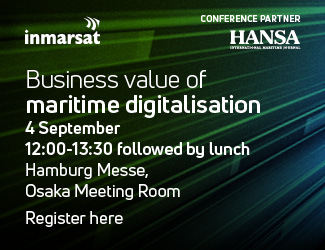
There are many levers to be tightened in the environmentally sound transformation of the maritime industry. But where to start? We have asked classification societies. This is the reply from Christos Chyrssakis, Business Development Manager, DNV Maritime.[ds_preview]
Unprecedented pressure from regulators and stakeholders across the value chain will combine to drive the uptake of low-carbon fuels – the key priority in achieving decarbonization and the burning topic of our age.
While the IMO is leading the charge with global regulations like EEXI and CII, regional bodies like the EU are devising their own rules to accelerate decarbonization locally. The EU’s Fit for 55 proposals, for example, include measures such as shipping joining the EU Emissions Trading Scheme (ETS) from 2023 and the FuelEU Maritime regulation, which will limit the carbon intensity of energy used on ships.
Meanwhile, financiers have espoused the Climate Bonds Initiative and Poseidon Principles, charterers have joined the Sea Cargo Charter, cargo owners are adopting climate standards for the ships they use while insurers have created their own set of Poseidon Principles. All this is driving the industry to move to cleaner fuels. However, the only available contenders right now are LNG, LPG and methanol. LNG is leading the way in terms of newbuilding orders with alternative fuels. Recently, there is very strong interest in methanol as a fuel, and orders have started to increase driven mainly by tankers and container ships. As fossil fuels LNG, LPG and methanol are only a stopgap, so in future we will need low-carbon bio or synthetic equivalents. We believe that advanced (sustainability certified) biofuels can play a big role in the medium term beyond 2025, mainly as drop-in fuels. Biogas can be used to make bio-LNG and bio-methanol, but there are limits to how much can be produced given the amount of biowaste needed. After 2030, we believe synthetic fuels will start to become more important on the decarbonization pathway.
While hydrogen is in the works for smaller vessels, ammonia is centre stage for large cargo ships, with the first two-stroke engines slated to come to market in 2024/2025. However, storage/supply technology needs further work especially on safety. DNV is conducting risk assessments on ship design, we have been involved in bunkering studies for Oslo and Amsterdam and are now leading a bunkering safety study for the Port of Singapore.
Suppliers interested in starting infrastructure investments for green methanol, ammonia, hydrogen and other fuels need to see demand certainty from shipping. Looking forward to 2035, there will be more availability, but the process will take time. As a priority we are helping owners and suppliers come together to help both sides move faster.
While energy efficiency is a key component in reducing energy use, in addition to the use of low-carbon fuels, a third decarbonization option is on-board carbon capture. Due to the costs involved we need carbon pricing to make this attractive. It also requires the development of land-based reception and storage infrastructure. Meanwhile, some countries, especially in the EU, are sceptical of carbon capture on board due to fears it will be hard to track what happens to the CO2 elsewhere.
As a side note, we get many questions about nuclear power, specifically Molten Salt Reactors (MSRs). If progress is smooth, the first marinized MSR demonstrator may emerge by 2028–2030. Even if the technology is accepted by the public, we don’t expect commercial uptake before 2035 as regulations will have to be updated. MSRs may indeed be part of the long-term decarbonization solution, but in the meantime, we need something else.
Despite the uncertainties, owners should be looking to build their future fuel strategy both for existing ships and newbuilds right now. Cost will decide the best options case by case. DNV is supporting many owners assess their fuel options using our FuelPath Model, which is a systematic techno-economical approach to facilitate their journey. We set the target CII trajectory, review feasible design options considering technical maturity, engine fuel convertibility and fuel storage and supply systems, assess the economic potential of each strategy over the ship’s lifetime and study the technical impact on ship design and future operations. The final Specification Review combines our expertise and experience to ensure the chosen solution is fit for purpose.As the saying goes, if you can’t measure it then you can’t do anything about it. To further support the industry on its journey to carbon neutrality, we have developed a number of digital class tools which focus on emissions monitoring and verification, as well as an application which provides a 360 perspective on compliance, helping operators stay ahead of the regulatory curve. For the latest decarbonization projections concerning the future fuel mix, availability, cost and much else, stay tuned for the launch of our annual Maritime Forecast report during SMM in September.














